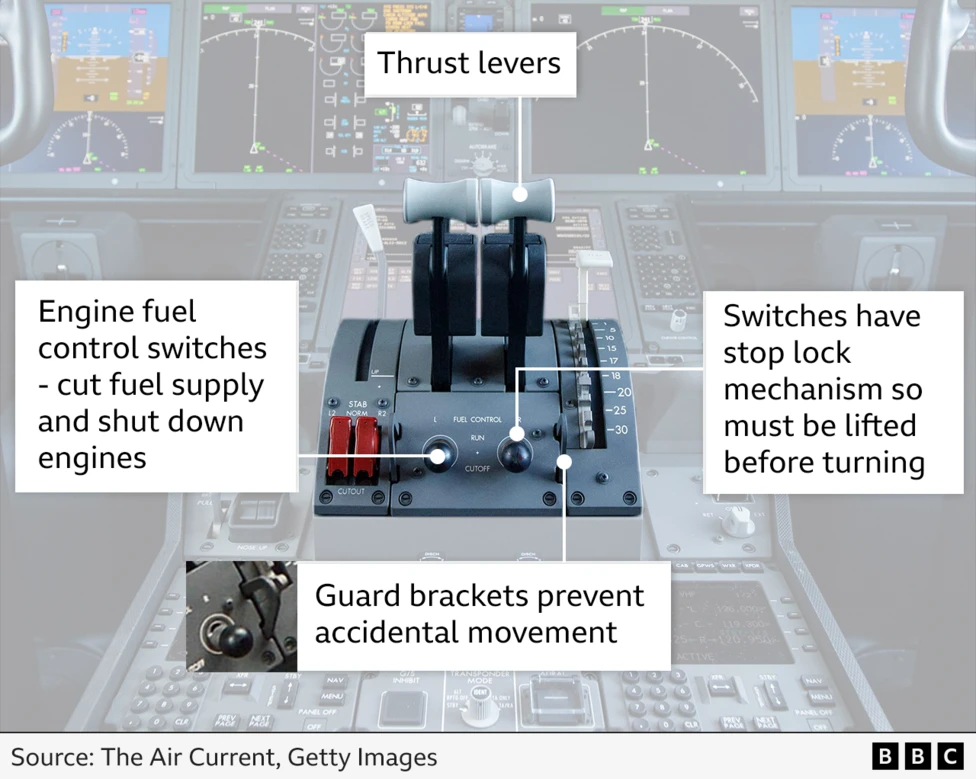Soldato
- Joined
- 25 Nov 2005
- Posts
- 12,721
I wish they would have released full transcript of the CVR, feels like a lot of information is missing from that beyond the "why did you cutoff" and "I didn't" and the Mayday call
There is one thing that doesn't quite sit right with me, and its probably nothing but although the engine switches were switched to cutoff within one second of each other - it took 4 seconds between switching one back to run, followed by the other. That would seem like an age in that situation.
Believe me - if you needed to, you could flip both those switches back to run in less than a second.
It's probably nothing or just a consequence of the incredibly chaotic situation but just seems a bit odd.
That’s sounds like a reasonable explanation actually. In the 737 the requirement is that the EGT is decreasing before engaging the engine start lever but the 78 engines are different so it makes sense that it would have a different procedure.In a good use of PPRuNe, someone did post the engine restart part of the checklists, and it listed a requirement that the engine be below idle.
Could they have been waiting for them to wind down a reasonable amount rather than engaging the starter above where it would normally have disengaged?
I’m assuming things have moved on in engine design, but TriStar engine running drummed into us that if you cancelled the start above where the starter disengaged, you had to manually cancel the start so that the gearbox drive didn’t wind down into the starter and cause (the amazingly named) crash engagement, which could destroy the gearbox and the engine.
I’m guessing the GenX is slightly more advanced these days…
That’s sounds like a reasonable explanation actually. In the 737 the requirement is that the EGT is decreasing before engaging the engine start lever but the 78 engines are different so it makes sense that it would have a different procedure.
Although an engine inflight start, and dual engine failure checklists are different in that respect. I’m not sure the dual failure checklist would have you waiting. But I’m not 78 rated so I don’t really know.
And we know everything about the captain, like his family and financial situation? We know all about Air India's pension or any upcoming changes to conclusively rule out the captain turning the engines off?The PM was the captain, he was so close to retiring. I really don’t see him doing murder/suicide. The PF would have been a bit busy handling the plane to reach over a deliberately flip both switches. I also don’t see any kind of mechanical issue or otherwise to cause it. So I’m a little confused I guess.
It's not that helpful.This is a helpful image from BBC.

And we know everything about the captain, like his family and financial situation? We know all about Air India's pension or any upcoming changes to conclusively rule out the captain turning the engines off?
I'm having a hard time seeing why others are having a hard time accepting pilot suicide. As someone above posted, the fuel cutoff switches were found in the RUN position, meaning the held position even in a crash, so they didn't move themselves simultaneous during a normal take off.
Take for instance the 2014 case of the RAF Voyager which suddenly nosedived toward the ground whilst in the cruise. In this case it was the aircraft itself which pulled out of the dive so it didn’t just impact the ground and obliterate all evidence. It turned out the pilot, whilst alone on the flight deck, had taken some photos with his DSLR then put the camera down to the side before moving his chair forward - the arm rest pushed the camera into the flight stick and put the aircraft into a dive:
I was on one of the Aeromeds to Turkey to collect the injured after this.
Its amazing what sort of injuries happen when you're not strapped in and the aircraft dives during food service with trolleys and cabin crew ending up everywhere.
I seem to remember more than one person refused to fly back and had to go by land?
It is an odd one. One pilot asks the other why he’s killed the fuel pumps but he denies he has. A genuine mistake/error or something more sinister?
Actually that is impossible, down is run, up is cutoff. The switches aren't manually locked, they have to be pulled out and then moved, they're spring loaded.
Yeah, hence my edit above. I don't know what I was thinking, sorry.Up is run, down is cutoff.
Yeah, hence my edit above. I don't know what I was thinking, sorry.
It’s the on/off valve for the engine, not the fuel pumps.
So it looks like there was an advisory to replace the switches that didn't have a lock, Air India didn't check and so that Air India flight could have had the disingaged switch locking installed. If so it looks like they can be accidentally switched off or switched off by vibration if there's no locking mechanism to prevent it.
Believe me - if you needed to, you could flip both those switches back to run in less than a second.

